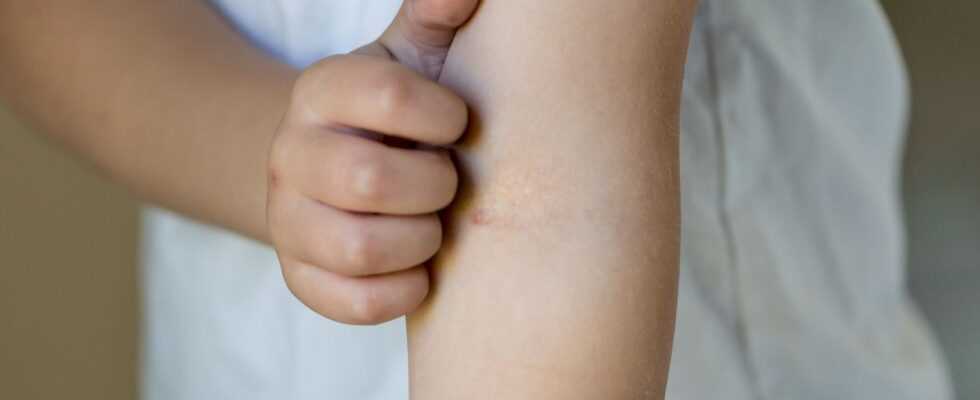A mild viral disease, molluscum is as painful to manage for children as it is for parents. What is this skin disease? Can we prevent it? And how is it cared for? We take stock.
It is a very common disease among the youngest. Like chickenpox or measles, it is part infant dermatoses that we usually contract between 2 and 7 years. Older children can also catch it, as can adults, although it is less common. The molluscum contagiosum is benign and therefore not serious, but should be removed as it is very contagious. For children, these pimples are sometimes unpleasant when they itch.
Molluscum can be caught by all babies, even if there is a predisposition in atopic children (because of the particular state of their immune system, allergies are recurrent in them, just like asthma, eczema, etc.) In addition, their skin being naturally dry, molluscum tends to itch more.
How to recognize a molluscum?
It is a small button that has a hole in the center. Similar to a navel, we then speak of "umbilicated papule". Generally the same color as the skin, it can also be a little lighter, pearly or pinkish. On darker skin types, the mollucum is also dark. It can appear alone, or multiply depending on the general condition of the child.
Pimples can appear anywhere, even if we observe them most of the time on the trunk, arms and also on the face. The most difficult areas to treat remain the eyelids or nose, because the skin is thinner or wrinkled.
After exposure to or contact with the virus, lesions appear on average in the next two weeks to two months, but it can go up to six months!
How to treat molluscum?
Even if the molluscum ends up disappearing on its own, it can take up to eight months, so it makes more sense to have them removed before. For this, different methods can be used.
At the dermatologist
From -190 °, this gas becomes liquid and will then allow the pimples to burn, by applying it to the areas to be treated. Rather unpleasant and painful method, it can leave small brown spots on the skin.
They can be emptied by making a hole in the center and removing the small hard core inside. This method is quite "barbaric", and causes bleeding. It is no longer widely used today, but has been in the past.
Using a curette (an iron rod with a small circle at the end), make a quick and very brief blow to tear off the molluscum. This method scares children (and parents) a little, but for Isabelle Catoni, dermatologist, "This is the cleanest method because we take them out and talk about them more. When done right, there is not even a scar. " The pullout movement is very fast, we logically do not feel the pain, but it can cause a little bleeding.
At home
If your child does not want to hear about the three methods mentioned above, potassium hydroxide treatments in the form of gels, creams and solutions are a good, longer but milder alternative. They are applied to the molluscum (s), one by one. You can find these treatments in pharmacies under the name of MOLUTREX® or POXKARE®, for example.
- Let the child scratch
This is a surprising method, but it is still effective in some cases. Indeed, by scratching regularly, the child will then make the molluscum disappear itself. Be careful however, if he has dirty nails, small bacteria can lodge on the area and infect him.
How to prevent a molluscum?
It is possible to anticipate the appearance of a molluscum when it has been determined who the infected person is around him. By practicing social distancing, then we get down to do not touch her, do not use her towel or clothes.
If this happens within siblings, parents should check that other siblings are not presenting small molluscum-like buttons. As a precaution, it is recommended avoid bathing, not sharing clothes, and washing your hands regularly. Unlike certain skin diseases such as scabies where total and thorough disinfection of clothing is necessary, in the case of one or more molluscum, a simple washing of the machine in the washing machine is sufficient.
The child can go to school with molluscums, but parents must inform the teacher since these are very easily transmitted by direct contact. Hand-to-hand games are therefore prohibited, as is the swimming pool, which is strongly discouraged.
Many thanks to dermatologist Dr Isabelle Catoni. For other tips, find it on his site.
